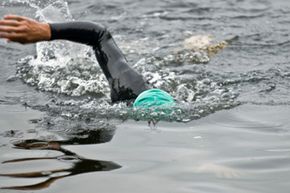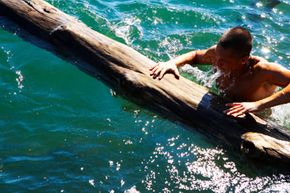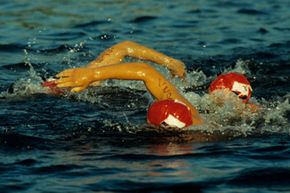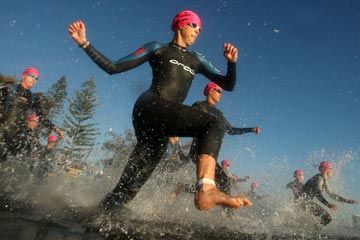There were easier ways to get to France. On a Sunday in August 1875, a British naval captain named Matthew Webb covered himself in porpoise oil, strode into the frigid off Dover, England, and started swimming. He faced ice-cold temperatures, swift underwater currents and even the occasional stingray, but 22 hours later, Webb strode ashore in France as the first person to swim the English Channel. Upon his return (by boat), an ecstatic British public showered the 27-year-old with accolades, publicity and even his own brand of matches.
Webb, it turns out, was an early practitioner of what we now call open water swimming. Once the sole domain of daredevils, open water swimming's worldwide popularity has been in a recent upswing. Open water swimming is the first leg of any triathlon. In 2008, marathon swimming made its Olympic debut in Beijing. Even English Channel swims have surged in popularity. Ever since Webb's 1875 feat, the channel has been swum by everyone from a 15-year-old girl to a man without arms or legs [sources: Sanders, Allen].
Advertisement
Humans have been swimming in lakes and oceans far longer than they've been swimming in pools, and there remains a certain primal attraction to open water swimming. Any open water swimmer will tell you that the sport is the rebellious cousin of the swimming pool. A far cry from clean, orderly time trials, open water swimming is a messy free-for-all of kicking feet and splashing arms. In the open water, success doesn't depend solely on how fast you can paddle, but on how well you can dodge and outwit your opponents.
And you're not just battling fellow swimmers. Rough weather, currents and cold temperatures all add a different flavor to each race -- giving participants a variability that pool swimmers could only dream of. Open water swimming is also more scenic. You can take to the Hudson River, swimming alongside the New York skyline. You can dive into pristine lakes in Western Canada. Or, at Kona, Hawaii, site of the Ironman World Championships, you can swim among brightly-colored tropical fish and coral reefs [source: Regensburg].
So, if dolphins find their way around using echolocation, how do swimmers navigate in open water? Read on to find out.
Advertisement















